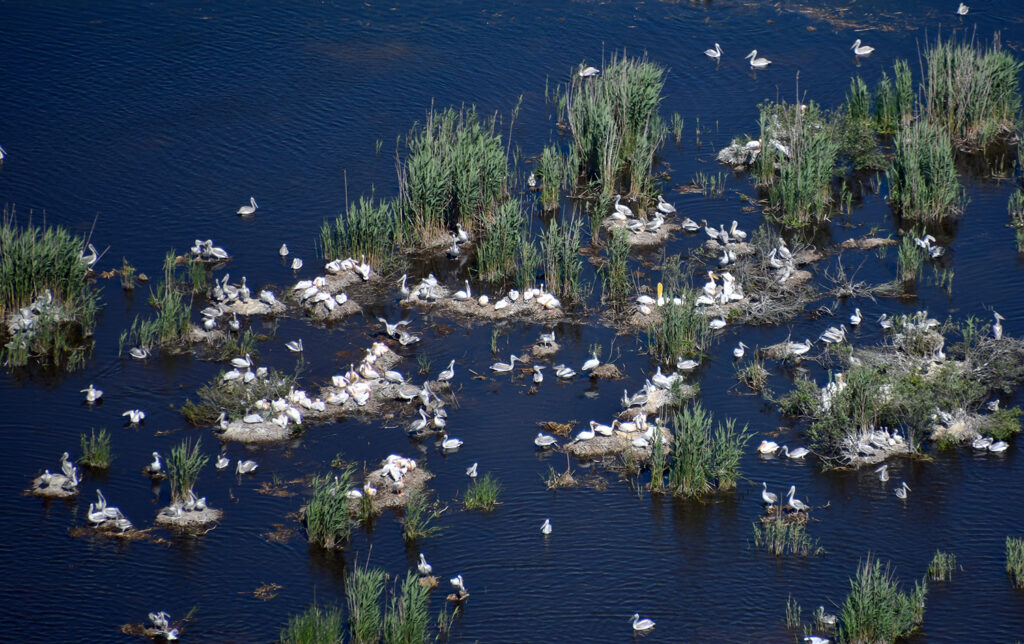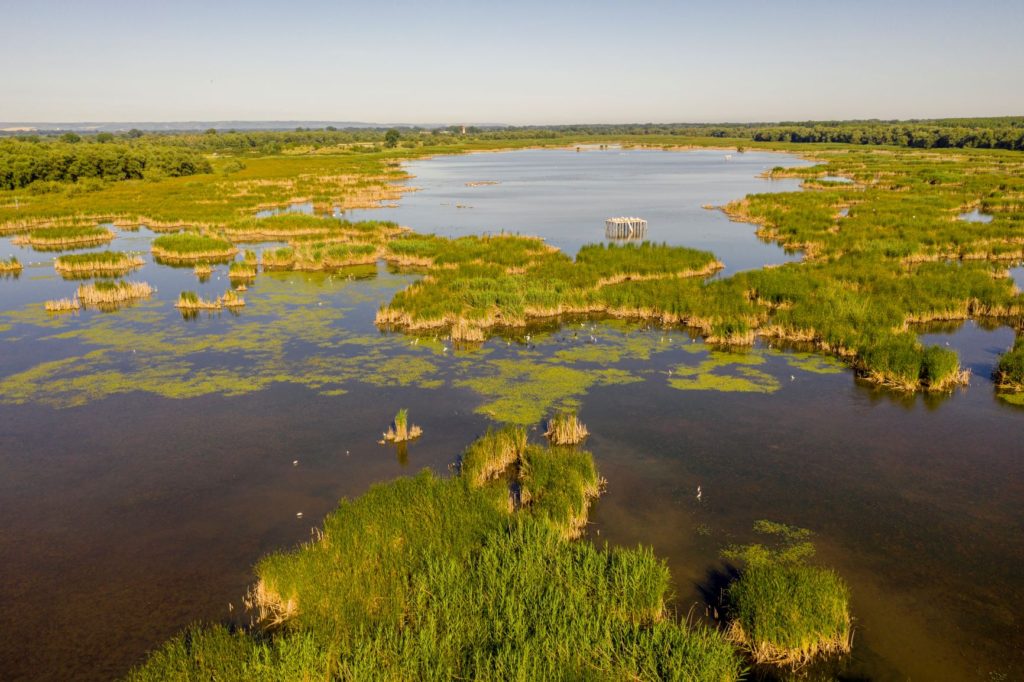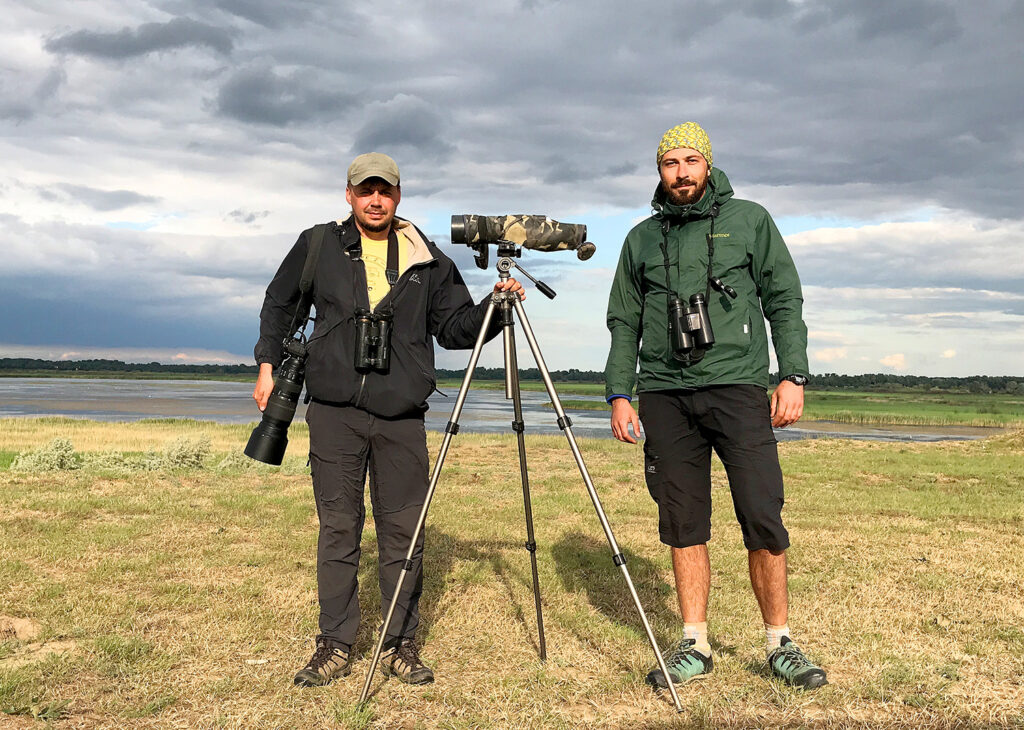With the year 2020 coming to the end, we are happy to share with you the year highlights of the rewilding efforts for Dalmatian pelican comeback along the Black-Sea Mediterranean Flyway. As the Dalmatian pelican is the ambassador of healthy wetlands, other species and the whole ecosystem will also benefit in the long run.
1. Dalmatian pelican population in the Danube Delta and along the Danube is growing
Recent surveys indicate that the Dalmatian pelican is making a tentative comeback in Europe. This is good news for ongoing rewilding efforts, which are playing a supportive role in the recovery. Counts of Dalmatian pelican populations in 2020, made by the Romanian Ornithological Society and Rewilding Ukraine in the Danube Delta, and also in the Persina Nature Park in Bulgaria by the Bulgarian Society for the Protection of Birds (BSPB), offer encouraging signs that the recovery of the Dalmatian pelican in Europe is ongoing. Read more here.

2. Artificial breeding platforms built in Bulgaria
The team of volunteers and experts of BSPB, Persina Nature Park and WWF Bulgaria has built a new wooden platform of 62 sq.m. replacing the old one in the Peschina swamp that had fallen. The other 2 platforms – in the Peschina Marsh and the Dead Marsh – were repaired. For additional softness and comfort of pelicans, the platforms were covered with reed bundles. At the end of December BSPB also started with the construction of the two floating platforms 40 square meters in size, made from floating pontoons.

3. Bulgaria has a Third Nesting Colony of the Dalmatian Pelican
A third nesting colony of the protected Dalmatian pelican in Bulgaria was formed during the current nesting period. It was noticed in June by the Bulgarian Society for the Protection of Birds. The pelicans have successfully occupied the wooden platform in the Dead Swamp on the island of Persin (Belene). After this great conservation success, there are now three colonies of the Dalmatian Pelican in the country: Srebarna Lake, Peschina Swamp (since 2016) and Dead Swamp. Read more here.

4. Pelicans photomissions held in the Danube Delta
At the end of May, a field expedition organized by Rewilding Ukraine to conduct scientific counts of the Dalmatian pelican and a photo mission took place in the Ukrainian part of the Danube Delta. The counts were conducted by Maxim Yakovlev, an ornithologist at the Danube Biosphere Reserve, who has been photographing nature and the inhabitants of this picturesque region for more than 15 years. Read the blog about the photomission. In autumn the Dalmatian pelican photomission was also held in the Romanian part of the Danube Delta by young photographer Cristina Anculete.

5. Joint international workshop took place in Lemos
At the end of February Lemos hosted a joint international project workshop. Experts from Bulgaria, Romania and Greece discussed methodologies and schemes for monitoring and researching of the Dalmatian pelicans, as well as the transmitter tagging and the ringing of birds. After the end of the theoretical part, participants also visited Lake Prespa, where they managed to observe the nesting Dalmatian pelicans.
